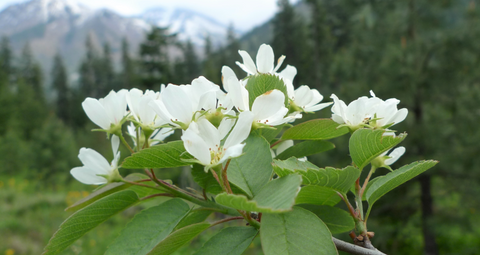Native Plants: A Local Solution to a Worldwide Problem
Would you like to improve the environmental resilience of your neighborhood?
Wouldn’t you feel proud feeding and housing endangered pollinators?
Well then, you should consider including native plants in your next gardening endeavour.
Plants that are indigenous and have evolved for centuries in a specific region are considered native. Because of their long-established symbiotic relationship with wildlife, even a small planting can have a positive impact in your area.
Give native plants a shot. The benefits are numerous and in no time your home will be buzzing with life.
The Benefits of Native Plants in the Environment.
Ecosystems thrive when populated with a variety of native plants.
- Native plants provide a habitat and nesting for many species of bees, especially overwinter.
- Native plants are a critical source of food for countless creatures. Between nectar, seeds, nuts, flowers and foliage, the local wildlife stays well fed.
- Native plants look gorgeous in the garden and landscape.
- Native plants are well suited to withstand environmental stress. They have evolved to endure extreme climate events.
- Native plants bring in desired bugs; think butterflies, bees, ladybugs, spiders and mantises.
- Pest pressure is minimized and annoying bugs like mosquitoes and gnats won’t find the space hospitable.
- They are the easiest to grow! Low maintenance and agreeable, native plants are appropriate in every situation. Remember the phrase “right plant, right place.”
Native Plants in North America
The raw, natural beauty and drastic changes in the landscape over the course of this continent is astounding. Native plants can sure look quite different depending on their home turf!
North American native plants are those that were growing naturally before the settlement of Europeans.
It’s important to recognize the wide variety and services provided by native plants. Listed by region, read about some of the most powerful pollinators and humble host plants of North America.
Northeast

- Swamp milkweed Asclepias incarnata
Flowers June-September, larval host for butterflies, attracts beneficial insects and a nest site for bees.
- Wild bergamot Monarda fistulosa
Flowers May-September, supports specialist bees, larval host, attracts beneficials, bumblebee plant.
- Wreath goldenrod Solidago caesia
Flowers May-June, supports specialist bees, larval host, attracts beneficials, bumblebee plant.
Midwest

- Butterfly milkweed Asclepias tuberosa
Flowers June-August, larval host, attracts beneficials, nest site and bumblebee plant.
- Field thistle Cirsium discolor
Flowers August-October, supports specialist bees, larval host, nest site and nest material.
- Pale purple coneflower Echinacea pallida
Flowers June-August, supports specialist bees, attracts beneficials, nest site and bumble bee plant.
Southeast

- Tall thistle Cirsium altissimum
Flowers June-November, supports specialist bees, larval host, attracts beneficials and bumblebee plant.
- Purple coneflower Echinacea purpurea
Flowers March-August, larval host, attracts beneficials, nest site and bumblebee plant.
- Frostweed Verbesina virginica
Flowers June-November, supports specialist bees, larval host, attracts beneficials and nest site.
Southwest

- Showy milkweed Asclepias speciosa
Flowers May-September, larval host, attracts beneficials, nest site and bumblebee plant.
- White prairie clover Dalea candida
Flowers May-September, supports specialist bees, attracts beneficials and bumblebee plant.
- Blanket flower Gaillardia pulchella
Flowers April-May, supports specialist bees, larval host, attracts beneficials and bumblebee plant.
Pacific Northwest

- Saskatoon serviceberry Amelanchier alnifolia
Flowers June-July, larval host, attracts beneficials and nest site.
- Shrubby cinquefoil Daisphora fruticosa
Flowers May-July, larval host, attracts beneficials, nest materials and bumblebee plant.
- Canada goldenrod Solidago canadensis
Flowers July-September, supports specialist bees, larval host, attracts beneficials and nest site.
The Case for Native Plants
At this point you may be asking “If native plants are so well equipped to thrive, why do they need our help?”
The uncomfortable answer is: We must undo the severe harm we’ve inflicted on our own environment.
Due to urban sprawl, introduction of invasive plants & pests, herbicide & chemical fertilizer used in lawns and big agriculture, native plant and animal populations are declining at an alarming rate.
Bird, butterfly, bat, and small mammal populations are vital to the stability of every ecosystem. The production of our own food is near impossible without a vibrant, diverse community of native wildlife pollinating and spreading seeds. These creatures do the unheralded yeoman’s work, tending to mother nature and optimizing her inexhaustible fertility.
Now more than ever, these wildlife populations need our assistance in their fight for survival.
We must once again fall back into the reassuring arms of mother nature and trust in her organic order. Every environmentally minded gardener can start by reincorporating native species back to their local end of the earth.
With properly balanced populations, flora and fauna will resume their harmonious dance, flowing gracefully to the symphony of creation’s seasons.
